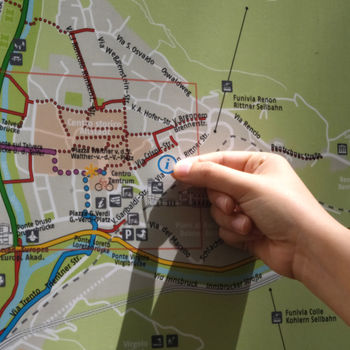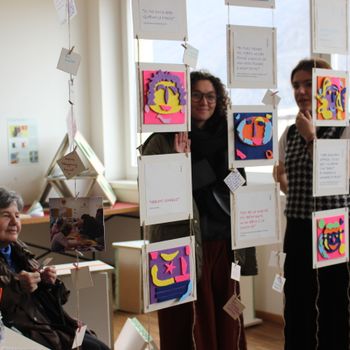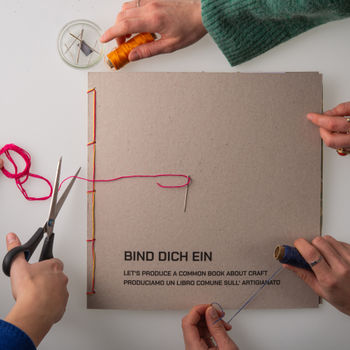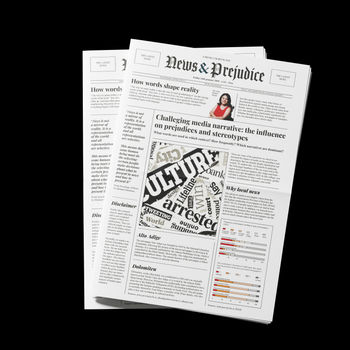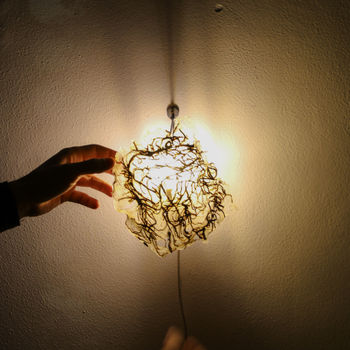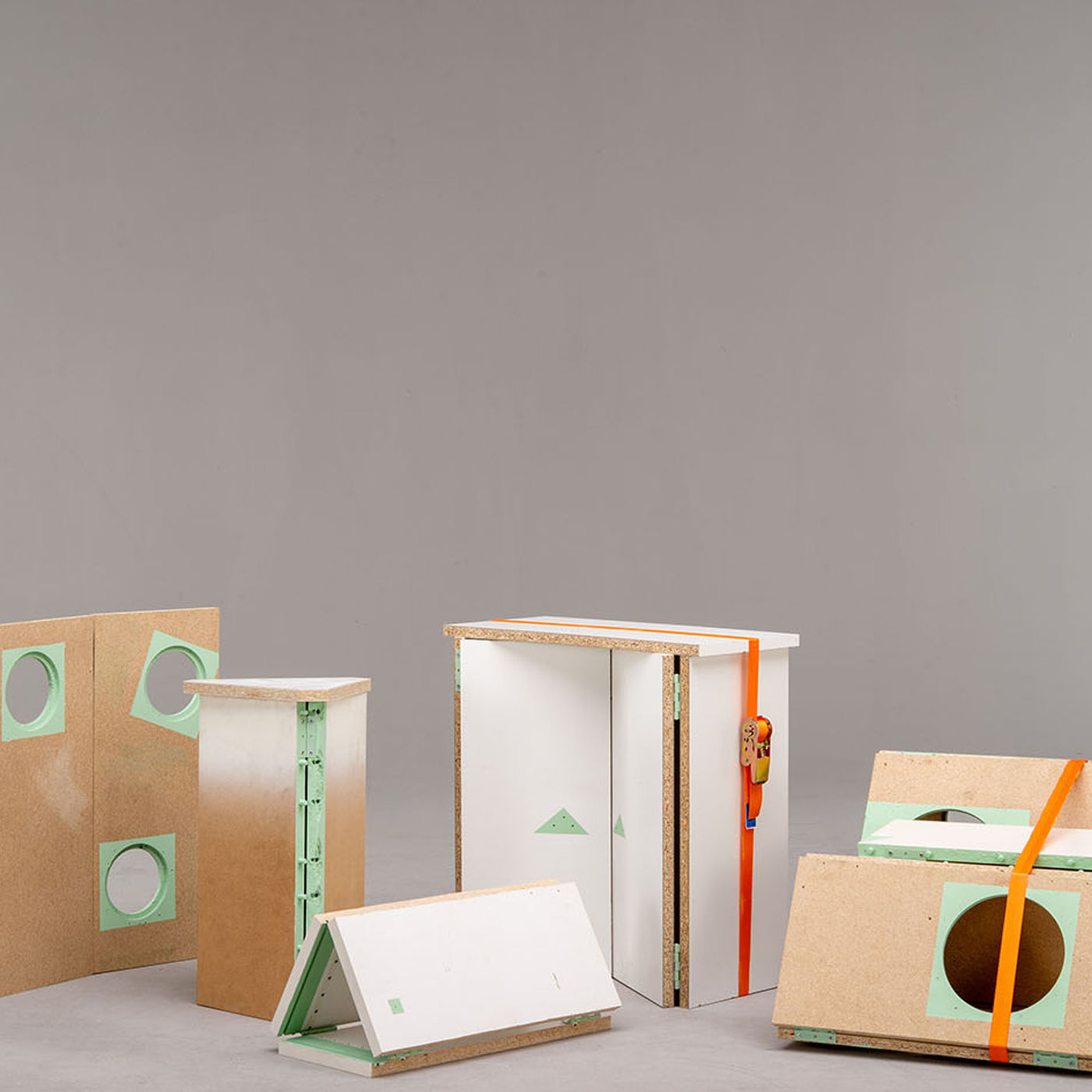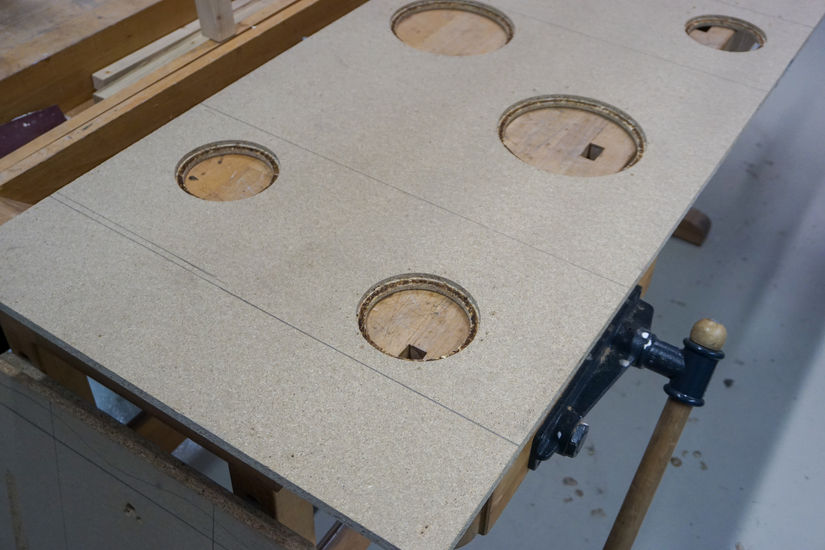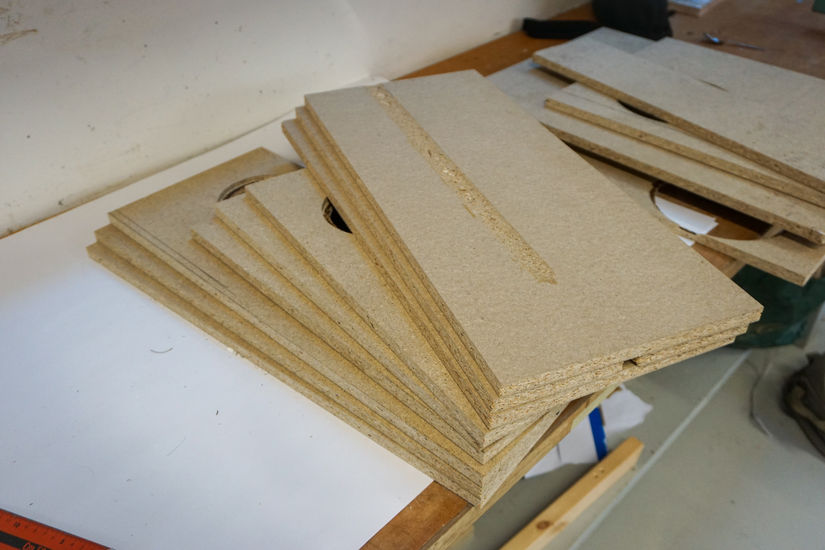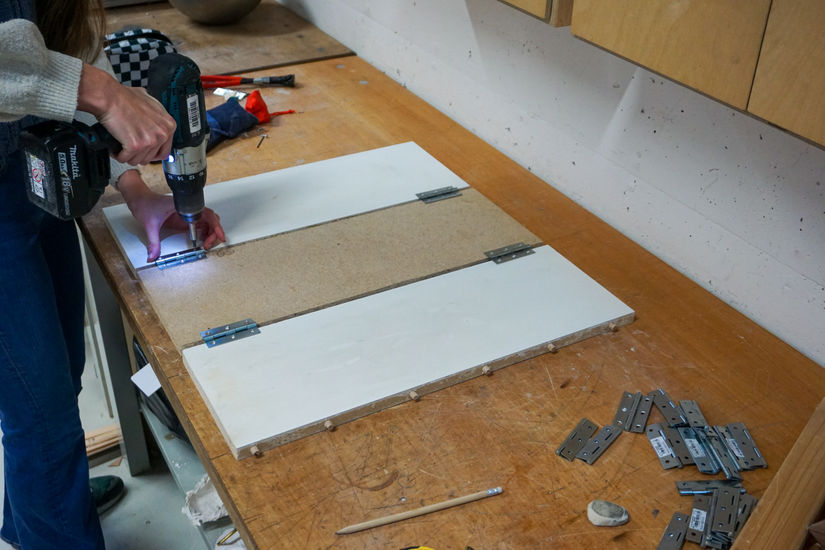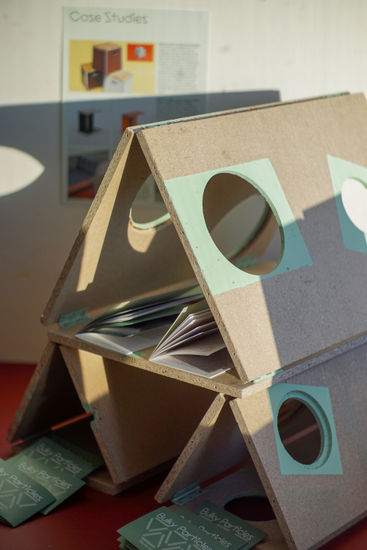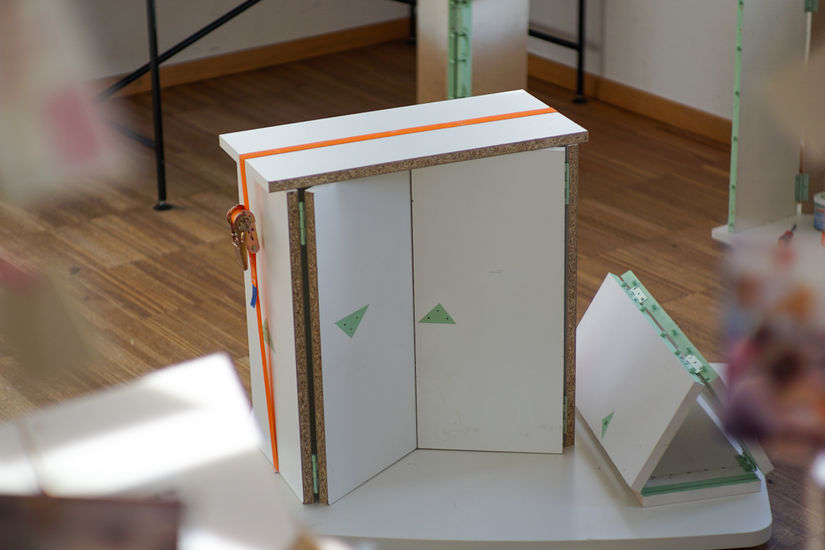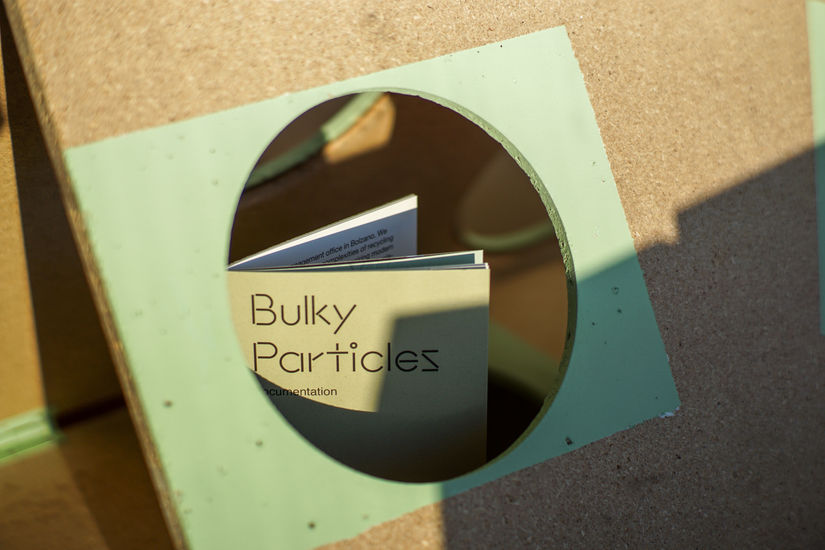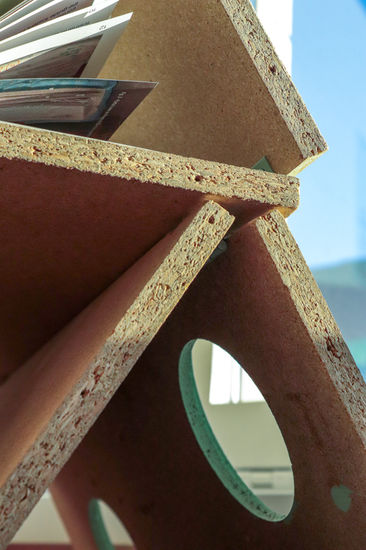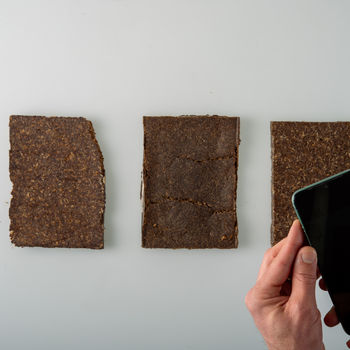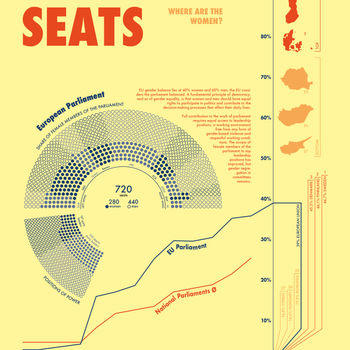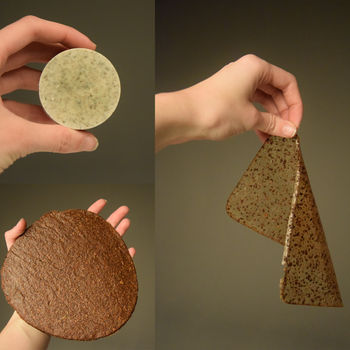Bulky Particles
Finn Reutter Pietro Rista Liselotte Michelle Van Beveren
Material waste is about resources no longer perceived as valuable. This project addresses the topic of material waste and its cultural dimension, with a specific focus on Bolzano.
The aim is to change how people perceive material waste, encouraging them to see it as a resource. By promoting a DIY approach, the project seeks to empower individuals and inspire a sense of gain rather than feelings of loss or guilt.
Starting with an analysis of Bolzano’s context, the project focuses on bulky waste as a category and particleboard as a material, highlighting its potential for reuse.
The guide demonstrates how to create a modular item from particleboard with multiple applications. These objects are simple to make, adaptable to any board dimensions, and accessible for everyone to create.
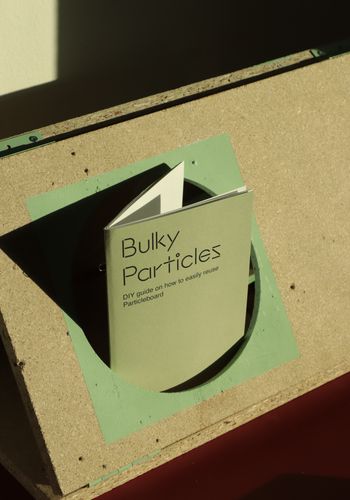
The guide’s aims are to:
Shift perceptions of waste material
People often have a sense of responsibility for what they discard but lack the time, ideas, or knowledge to reuse items. By gently introducing the concept of reuse, the guide helps users see waste as a resource.
Empower individuals
With a low-tech, DIY approach, users can create their own objects from discarded materials, encouraging them to build rather than buy. This process also enhances personal crafting and problem-solving skills.
Promote active participation in solutions
The guide offers an alternative to material consumption and waste. By creating value from waste, individuals can contribute to ethical, sustainable behavior and play an active role—however small—in addressing environmental challenges
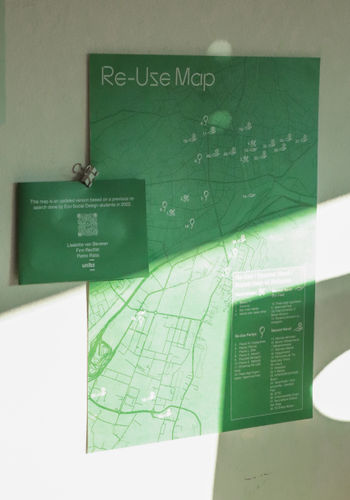
To better understand the context of Bolzano, we began by researching existing activities around upcycling and reuse. Upcycling has become a notable part of local businesses and community projects, with workshops and creative hubs transforming discarded furniture into new designs and restoring vintage pieces. The municipality has also implemented initiatives such as waste separation programs and community events to promote the benefits of upcycling. However, many residents remain unaware of these opportunities. To address this gap and establish a clear foundation for our project, we created a detailed map of Bolzano highlighting reuse-focused spaces, including workshops, events, and second-hand stores.
The map we created is based on a research done previously by ecosocial design students.
 For this project we created a flexible modular object from wasted particleboard that can be used in several ways, assembling them into a custom structure. The goal is to work with what you have and embrace imperfections. This approach offers an accessible way to start reusing materials creatively and efficiently.By adding an accent colour, the beauty of every flaw is highlighted, transforming imperfections into opportunities. It’s all about resourcefulness and finding joy in creating something truly your own.
For this project we created a flexible modular object from wasted particleboard that can be used in several ways, assembling them into a custom structure. The goal is to work with what you have and embrace imperfections. This approach offers an accessible way to start reusing materials creatively and efficiently.By adding an accent colour, the beauty of every flaw is highlighted, transforming imperfections into opportunities. It’s all about resourcefulness and finding joy in creating something truly your own.
While the triangles can be used as furniture elements, we chose not to focus solely on furniture-making. Instead, we aimed to demonstrate how particleboard from old furniture can be reimagined into entirely new and unexpected objects, showcasing the endless potential of creative reuse.
For the modular triangle we used materials and tools that are commonly owned by most people, making the object easy and accessible for anyone to create.
The shape is instructed by the material properties and by the process: by cutting the particleboard in three or more pieces with a jigsaw the long edges are not required to be in perfect square thanks to the joint methods with hinges that ensure an even distance from the edge. The closed module results in a structural piece, offering different ways to use itby tying them together with a belt.
" width="2100" height="1470" sizes="(min-width: 1040px) calc(66.68vw - 115px),(min-width: 780px) calc(83.33vw - 137px),calc(100vw - 20px)" srcset="https://ik.imagekit.io/qo10vu9hi/tr:w-2100,h-1470:fo-fo-auto/public/Uploads/Studio-Shoot-11-v5.jpg?ik-sdk-version=php-2.0.0 2100w, https://ik.imagekit.io/qo10vu9hi/tr:w-1750,h-1225:fo-fo-auto/public/Uploads/Studio-Shoot-11-v5.jpg?ik-sdk-version=php-2.0.0 1750w, https://ik.imagekit.io/qo10vu9hi/tr:w-1400,h-980:fo-fo-auto/public/Uploads/Studio-Shoot-11-v5.jpg?ik-sdk-version=php-2.0.0 1400w, https://ik.imagekit.io/qo10vu9hi/tr:w-1050,h-735:fo-fo-auto/public/Uploads/Studio-Shoot-11-v5.jpg?ik-sdk-version=php-2.0.0 1050w, https://ik.imagekit.io/qo10vu9hi/tr:w-700,h-490:fo-fo-auto/public/Uploads/Studio-Shoot-11-v5.jpg?ik-sdk-version=php-2.0.0 700w, https://ik.imagekit.io/qo10vu9hi/tr:w-350,h-245:fo-fo-auto/public/Uploads/Studio-Shoot-11-v5.jpg?ik-sdk-version=php-2.0.0 350w">For this project we created a flexible modular object from wasted particleboard that can be used in several ways, assembling them into a custom structure. The goal is to work with what you have and embrace imperfections. This approach offers an accessible way to start reusing materials creatively and efficiently.By adding an accent colour, the beauty of every flaw is highlighted, transforming imperfections into opportunities. It’s all about resourcefulness and finding joy in creating something truly your own.
While the triangles can be used as furniture elements, we chose not to focus solely on furniture-making. Instead, we aimed to demonstrate how particleboard from old furniture can be reimagined into entirely new and unexpected objects, showcasing the endless potential of creative reuse.
For the modular triangle we used materials and tools that are commonly owned by most people, making the object easy and accessible for anyone to create.
The shape is instructed by the material properties and by the process: by cutting the particleboard in three or more pieces with a jigsaw the long edges are not required to be in perfect square thanks to the joint methods with hinges that ensure an even distance from the edge. The closed module results in a structural piece, offering different ways to use itby tying them together with a belt.

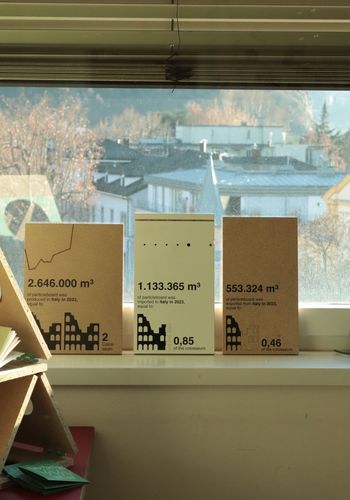
Our research involved several desk research and interviews in gathering data about particleboard use, production and disposal. For the final exhibition we develop some infographics for giving to the numbers a tangible dimension.
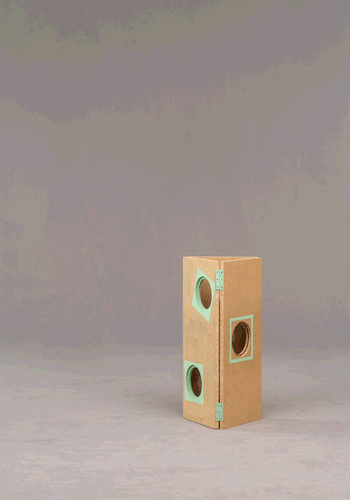

Project 1 - Inhabiting Borders
